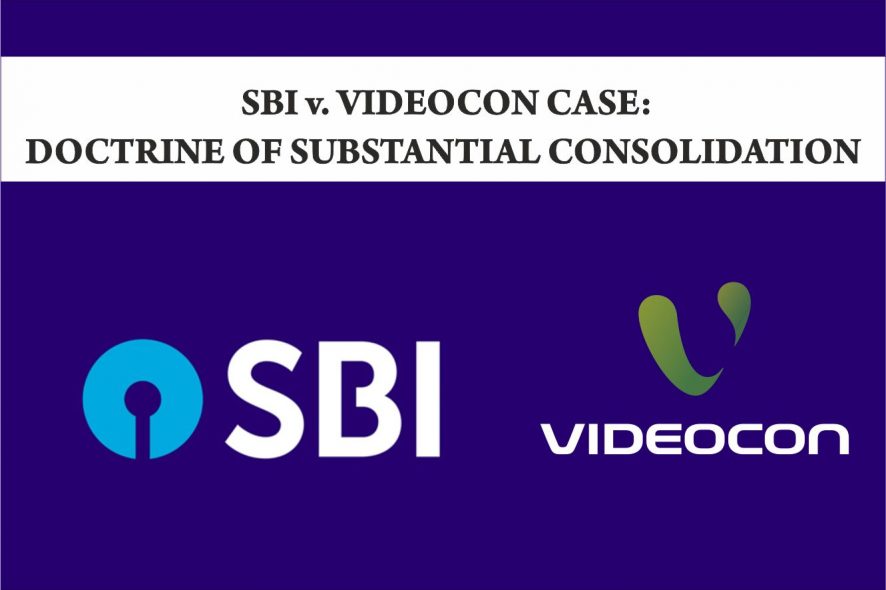The insolvency and bankruptcy jurisprudence is still in its nascent stages in India. It is a developing niche area, with certain problems still needing to be discussed.
One major issue with the Insolvency and Bankruptcy Code of 2016 is the lack of provision for fair value for the insolvent industries as a going concern, with respect to the interest of the creditors. This issue is highlighted even more in “group companies” where a corporate veil has been created. The entities are interdependent on each other and this precludes them from benefiting from appropriate resolution plans, thus resulting in liquidation with little or no recovery.
To tackle this issue, the doctrine of substantial consolidation, which is widely used in US and UK bankruptcy laws, is to make an advent in the Indian legislatures, supported by in the Report of the Insolvency Law Committee, 2018. This doctrine enables the adjudicating authority to merge the assets and liabilities of all such individual entities in a common pool, resulting into a common corporate insolvency resolution process (CIRP). This not only maximises the asset value of the group company, but also attempts to eliminate cross-debts.
It is, thus, pertinent to analyse SBI v. Videocon Industries Ltd.1, where the National Company Law Tribunal (NCLT) Mumbai Bench recognised this doctrine and allowed consolidation of 13 of the 15 Videocon Group companies.
Facts
A consortium of banks led by State Bank of India, being the common creditor, moved a petition in NCLT Mumbai Bench, asking for the substantial consolidation of the group of 15 companies under the “Videocon Group”, to form the common debtor. This application was moved because a separate CIRP petition against each of the companies failed to attract bids due to their complex interdependence, and inability to pay off since they held no separate value or identity.
The NCLT Mumbai Bench analysed the case, with reference to previous US and UK case laws, and decided in favour of the consortium, grouping 13 out of the 15 companies into a single entity as the common debtor. The Bench left out two of their companies, KAIL Ltd. and Trend Electronics Ltd., out of the grouping because they did not have any operational dependency on the other companies and were strong financial entities.
The takeaway from this landmark judgment entails the doctrine of substantial consolidation, a concept that emerged primarily in the US bankruptcy regime. The doctrine enables the adjudicatory authority to merge the assets and liabilities of all such individual entities in a common pool, whereby involving them in a common CIRP.
The consortium of 18 banks had filed the petition for consolidation after Videocon Group of Companies defaulted on various loans and bank guarantees. The functions of the companies were so interlinked that it was difficult to ascertain their value as independent entities due to inability to segregate their assets and liabilities. Videocon Group’s consolidated financial statements, or existence of inter-corporate guarantees on loans further established their interdependence on each other. The question before the Bench was to analyse whether the consolidation so asked for, would be more beneficial than harmful.
Insolvency and Bankruptcy Code (IBC) being operationalised only in 2016, is still in its nascent stage, which is why a lot of developments are yet to happen in this front. The Report of the Insolvency Law Committee, on 26-3-2018 already paved a way for this doctrine to enter the Indian judiciary. It stated that:
“It was noted that the treatment of group companies within insolvency laws is a complicated subject. The current system of insolvency laws is new, and it may be too soon to introduce a complex subject, like the present issue.”
Basing its observations on this Report, NCLT Mumbai Bench stated that the problem of consolidation had cropped up sooner than expected, and a matter as pressing as this could not be avoided or deferred till legal provisions are established for the same. The Bench came up with a two-pronged test to determine the test for consolidation in this case.

Test for Consolidation
After hearing the facts presented, the Bench came up with the following two tests:
- A prima facie existence of elementary governing factors; and
- categorisation based on the governing factors.
For the first test, the Bench used the approach forwarded by the US bankruptcy courts and laid down a list of 14 factors, whose existence needed to be verified into, such as common control, common directors, common assets, common liabilities, interdependence, interlacing of finance, pooling of resources, coexistence for survival, intricate link of subsidiaries, intertwined accounts, interlooping of debts, singleness of economic units, common financial creditors and common group of corporate debtors. Subsequently, for the second test, the Bench called for the categorisation of companies based on the abovementioned factors.
The first category consisted of companies whose assets and liabilities were so interlinked that their segregation would result in little or no maximisation of asset value, whereas the second category would comprise of companies whose asset liability intermingling, when segregated, would still provide for viable profitable restructuring proposals.
Using the two tests, the Bench ordered for the consolidation of 13 out of the 15 Videocon companies, and left the remaining two, because they fell in the second category.
Analysis of the Doctrine
Corporate law is based on the basic principles of limited liability, and separate legal entity, established by two landmark cases of Salomon v. Salomon and Co. Ltd.2 and Lee v. Lee’s Air Farming Ltd3. The doctrine of substantial consolidation strikes at these principles, and in a way, could be termed as an extension of the concept of “piercing of the corporate veil”. However, the latter is a vertical merger of the subsidiaries with the parent company, whereas the former is a horizontal one.
Piercing of the veil is also a limited merger benefiting only one creditor, whereas substantial consolidation ensures an equitable distribution to all creditors. The reason behind these remedies is to identify and rectify the fraud committed by the corporate group. The first test established by the Bench tries to identify this “fraud”, by analysing to what extent the companies were intermingled. The second test then tries to balance the equity between consolidation and maintaining the separate legal identity of the entities. It ensures that only those companies are grouped together that will go into liquidation if separated.
The doctrine of substantial consolidation is well developed in decisions arising in cases under the US Bankruptcy Code (11 USC Section 101 and following). The Bankruptcy Code does not specifically authorise substantive consolidation, but the courts have derived their authority to substantively consolidate entities from the broad equitable powers found in Section 105 of the Bankruptcy Code. In Auto-Train Corpn. Inc. v. Midland-Ross Corpn.4, it was stated that in order to properly apply this balancing of interests, “a court must conduct a searching inquiry to ensure that consolidation yields benefits offsetting the harm it inflicts on objecting parties”. In Augie/Restivo Baking Co. Ltd., In re5, the Second Circuit Court of Appeals, came up with their test to determine the types of interrelationships shared by these companies, as (i) whether creditors dealt with the entities as a single economic unit, not relying on their separate identity in extending credit; or (ii) whether the affairs of debtors are so entangled that consolidation will benefit all creditors.
NCLT Mumbai Bench put reliance on several US and UK case laws, one of which being the case of Food Fair Inc., In re6, where the Bench held that the “key factor for granting substantive consolidation of all debtors is required to yield an equitable treatment of creditors without any undue prejudice”. Despite the new benefits arising from this new concept, substantial consolidation brings about a few challenges as well.
The consolidation does not always bring benefit to all the creditors. It goes against those creditors who extended monies to the company as an individual entity, rather than the group, and now will be forced to take this consolidation as their only way out by taking larger cuts in the common resolution plan from a common pool. Secondly, these creditors will also have their voting shares reduced in the committee of creditors (CoC) due to the proportionate reduction in the debt owed to them. Operational creditors are at severe disadvantage with some might even losing their right to be present in the CoC meetings.
NCLT Mumbai Bench thus allowed objection to consolidation balancing “equity between consolidation and maintaining corporate separateness”. This independence of the entity from other group companies emerged as touchstone of the doctrine test while creating the two categories.
Conclusion
To sum up, reliance should be put on whether consolidation brings more benefits than losses if not consolidated. The decision should be in favour of consolidation if the results are outweighing the cons, even if the entity is found to be self-sustainable and independent through the second test. The advent of doctrine of substantial consolidation will benefit recoveries in other large group company insolvency cases, while applying the broader principle of balancing equity between consolidation and maintaining corporate separateness of the entity.
* Ritisha Gupta Research Assistant, Corp Comm Legal, e-mail: ritishagupta02@gmail.com
3 1961 AC 12 : (1960) 3 WLR 758.
4 810 F 2d 270, 276 (DC Cir 1987).
5 860 F 2d 515 (2nd Cir 1988).
6 10 BR 123 (1981).







